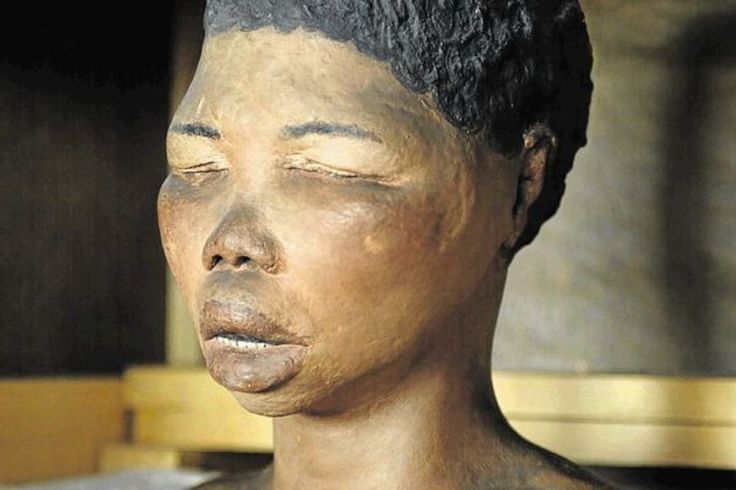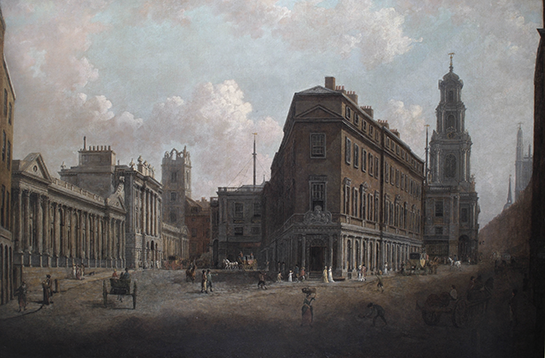Final Essay – Cross Cultural World History
Sara Baartman, born Saartje Baartman was born in 1789, as a native Khoikhoi woman from South Africa’s Cape. Her life was synonymous with exploitation and abuse. Early colonial years between the years of 1652 to 1795 the Dutch East India Company had control over the Cape of South Africa used as a port. Famous for being a slaving company, the locals, especially women were exploited, Carter states that “The Dutch East India Company dominated all aspects of life” (Carter, 1991, p.70) of the native peoples. During Sarahs life she would experience both Dutch East India Companies control and the following colonisation of the English in 1795. Sara’s life is the perfect example of native exploitation, claimed racial inferiority, popular freak shows, and the development of ethnography and ethnopornography in European anthropology circles. Sara Baartmans experience is a demonstration of the ‘contact zone’ and how native exploitation would become common place for British settlements, and furthermore the abuse of the native Khoikhoi and other local peoples of South Africa between the 15th to 18th centuries.
Sara Baartman, was most famously a show-lady, being exploited by the British colonials Hendrick Cesar, her showman and Alexander Dunlop her manager in the early 19th century. Sara Baartman was included in freak shows in Europe from 1810 – 1815, whilst the latter stages of her shows included ethnography, in “modern” French anthropology circles but also in ethnopornography due to her abnormal buttocks and vagina. It was later understood that this is a genetic characteristic known as “steatopygia” leading to an increased accumulation of adipose tissue in the buttock region and is most notably found amongst the Khoisan of South Africa. French anthropology circles considered this “racial science and cultural perceptions of the female body” (Scully & Crais, 2008, p.302), although fascinating, she often reinforced the idea of racial Darwinism and subject to racial inferiority, “deeply rooted in the idea of European supremacy and coloured inferiority (Dennis, 1995, p.244). This ingrained mindset of European superiority in the latter 19th century dictated Indigenous populations globally, from South Africa, Australia and South America, freak shows and exploitation of native peoples was commonplace.
The change between Sara Baartman working in a freak show, often depicted sleeping in cages next to rhinos would further change in the latter years of her working career when she met a French man Cuvier. Her shows would change from freak shows to being a subject for anthropologists, the first circles of anthropology founded in late 1799 the French “société” the world’s first anthropology society (Stocking, 1964). The combination of Sara Baartmans culture, and physique which was a result of her condition steatopygia made her a prime example of primitive African culture to anthropologists studying the progression of human evolution. Alike most features of her life, the idea of European superiority and her inferiority due to her physique and colour. She was interesting to the Europeans, due to their notion that she was not an evolved human and was a missing link. This early form of anthropology was the study of the human body.
Sara Baartman’s shows “outraged some of the anti-slavery lobbies” (Scully, 2008, p.301), Sara’s plans were to move back to South Africa, but as stated above her premature death would change history. On December 29th, 1815, Paris France, Sara Baartman passed away there were assumptions of the cause of death but the most prominent were diseases such as syphilis, alcoholism, smallpox, or pneumonia. Through her work with the French société anthropological circle, Sara’s body was on display after her death, as a scientific marvel (Scully, 2008, p.302). Sara’s body would be on display from 1815 in the Musee de l’Homme in Paris, despite outrage over Sara’s body in display, she was featured in the museum until 2002, for 180 years until the South African government negotiated with the French for 5 years. Upon her arrival to her home, Sara Baartman was laid to rest in the Cape, where she was presumed to have been born. Sara’s life and death explores the ideas of colonialism and imperialism amidst the colonial period of western civilisation from the 15th to 19th centuries. Sara shows us how the abuse of natives in contact zones has impacted our world. Sara Baartman is an example of abuse and exploitation, from her shows as a freak, her experience in French anthropology circles and her death where she continued to be on display as a scientific marvel, an unevolved human, inferior to European civilisation. Sara’s death and display in Musee de l’Homme France, elaborates on disregard for her dignity, culture, humanity, and the lack of respect, taking 180 years to laid to rest in South Africa. In most situations, the “contact zone” (Mary Pratt, 2007) had a direct correlation to exploitation and in both life and death Sara Baartman was no exclusion.
The change from the colonial state of South Africa from the power of the Dutch East India Company to the British settlement changed the colonial region, would witness more abuse. Slavery, exploitation, death and mass killings would occur on the British arrival, and the ideology of racial Darwinism would develop and South Africa witnessed “the Darwinist notions of evolution and hierarchy” (Mhlauli, 2015, p.204), the slavery was intwined with South African culture and the “relationship of power and domination that was originated and sustained by violence” (Carter,1991, p.69) and ultimately developed “the state of social death”(Carter, 1991, p.69) where natives would be abused until the abolition of slavery in 1834, where sociodemographic issues, violence and generational trauma still continues into the 21st century. Although the abolition was in place slavery, segregation, racial tension, and abuse continued, and much of South Africa in modern times still experience these issues. The ideology of social death occurred due to the extreme exploitation, of Indigenous populations, which had no agency or voice to represent or defend themselves. The result, the term social death is the example of the extreme prejudice against the native, Black population and their inability to join the now established British civilisation in the Cape of South Africa.
Slavery in South Africa has a unique history, “the Cape in the late 18th century was one of the most rigid and closed slave societies in the world” (Carter, 1991, p.70). In contrast to America, “South Africa in the eighteenth century there was virtually no opposition to slavery” (Carter, 1991, p.70). This deep connection with abuse, exploitation and slavery would not cease until 1834 when Britan abolished all slavery in their colonies. Despite the abolition, apartheid and segregation continued until the 4th of May 1990, which places South Africa as the country with one of the longest durations of abuse, exploitation, and racial subjugation in world history. This has resulted in a vast wealth and sociodemographic disparity and a continuation of racial profiling and discrimination today. South Africa in the 21st century remains one of the most economically disparate cultures, and one of the most dangerous countries in the world, linked to its severe history.
Gender and race play an especially significant role in slavery and exploitation, women were a commodity in British colonial South Africa and were sold into prostitution. This was due to the vast number of sailors in the Cape. Sara Baartman was no exception, and she was sold as a commodity as well. According to scholarly Scully Baartman had no agency, as she experienced control and abuse throughout her life (Scully, 2008, p.312). Sara Baartman could not understand her agency and the shackles Cesar and Hendricks placed her in. Anti-slavery lobbies argued for Sara Baartman’s freedom and as she was illiterate Sara had signed a contract which locked her into working for Cesar, being bound by law alongside her lack of agency, Sara was forced to continue working.
The “contact zone” coined by Mary Pratt is a term used to reference “spaces where disparate cultures meet, clash and grapple with each other, often in highly asymmetrical relations of domination or subordination such as colonialism and slavery” (Pratt, 2007, p.7). Contact zones are often used in relation to imperialism and colonisation. Instances of contact zones are widespread throughout history, mostly during the imperialist era of the 1500’s to the 1900’s. Settlements such as the Americas, South Africa and Australia resulted in violent instances of the contact zones, resulting in death and exploitation. The landing of the Dutch in the Cape would change South African culture and would affect its native peoples for over three hundred years. Sara Baartman experienced Mary Pratt’s “contact zone” (Pratt, 2007) with the Dutch over the first two decades of her life and in 1795 when the British would colonise the cape. These two disparate cultures, as stated by Mary Pratt, clashed, and resulted in oppression of the Indigenous peoples. Pratt also uses the term “transculturation” in the contact zones, which is “marked by the influx of new culture elements and the loss or alternation of existing ones” (Pratt, 2007, p.8). Sara Baartman exemplifies transculturation as she experienced of the loss of her culture and adapting to European civilisation as a slave, freak, and further scientific study in French anthropology. Mary Pratt’s “transculturation” (Pratt, 2007) is when two cultures are forced to adapt, and in many contact zones and settlements this resulted in learning of languages and cultural customs. Sara Baartman throughout her life, due to contact zones and transculturation would learn both English and Dutch, alongside a small amount of French during her years in Paris. As an example of transculturation in contact zones, it demonstrates the adaptability when two cultures meet and clash.
Scholar, Gouda further examples Mary Pratt’s “contact zones” (Pratt, 2007), describing the contact zone as “differences in sociopolitical and cultural power grounded in colour–coded and gendered bodies” (Gouda, 2008, p.165), this definition describes contact zones after the culture has developed. In South Africa, these difference in sociopolitical and cultural power were established by British colonisation and abuse of native peoples. Gouda also shares the opinion of racial Darwinism and how there was “presumed disparities in human intelligence and sensibilities that infused the contacts between Europeans and native subjects, prompting white-skinned colonisers to act out their innate sense of superior civilisation in myriad ways” (Gouda, 2008, p.165), Gouda’s quote could be referencing why it was considered acceptable to treat the natives poorly, as they aren’t as evolved as the European civilisation. Gouda’s description explains the racial inferiority and sets an example of how culture and treatment of natives develops in contact zones. Gouda’s examples of European superiority in the contact zone relates to Sara Baartmans travels, slavery and ultimately her lack of agency regarding her work in both freak shows and anthropology circles in France, where due to her history, she had no agency in her decisions, made for her by the supposed superior European men such as Cesar and Dunlop. Scholar Dunton further exclaims that Sara Baartman’s legacy in the latter years of the 20th century Sara’s legacy was met novels and poems about her life (Dunton, 2015).
Sara Baartmans experience in freak shows and anthropology was not an isolated experience as there were many other exploited natives. Australian Aboriginals “Billy, Jenny, Little Toby, and their companions were photographed for anthropologists in Europe” (Poignant, 2000, p.36) and paraded in the Americas. Their experience was 60 years after Sara Baartman’s death, in the 1870’s in comparison to Sara Baartman in the early 1810’s. Racial Darwinism was also prevalent in these Aboriginals lives, “By mid-century the extermination of the colonised people was rationalised as an inevitable consequence of their presumed racial inferiority” (Poignant, 2000, p.38). Sara Baartmans Khoikhoi people experienced the same fate within the British colonies occupied hands, experiencing the devastation of her people. Billy, Jenny, Little Toby, and their companions are a further example of supposed European superiority, and the theory of racial Darwinism which classifies European superiority, where both the Aboriginal’s and Sara’s South African natives share the exploitation, as an inferior primitive human in comparison with Europe’s evolved civilisation.
Sara Baartman’s life is a demonstration of the abuse amidst European colonisation by both the Dutch East India Company and the British settlement. The contact zone and its causation of racial disparity resulted in exploitation of not only Sara Baartman but of the native South African civilisation. Sara Baartman is an example of Mary Pratt’s “transculturation” where separate and often opposing cultures need to adapt, Sara Baartman because of both the Dutch and the English would become fluent in both languages, and due to slavery, she would adapt to the European civilisation and its colonial life. Sara Baartman was also a show lady and would become a scientific marvel within the first anthropology circle, the French société.
Sara’s travels as a show person were exploitive of her condition and her inferiority in comparison to European civilisation. Sara Baartmans exploitation amongst anti-slavery lobbies in Britian and was coined as “under the restraint and control of her exhibit and is deprived of her liberty” (Scully, 2008, p.312). Although Sara was a slave amongst much of the British population and due to her lack of agency she continued to work as both a freak and later a scientific example of racial inferiority to French anthropology circles.
Gender and race played a substantial portion of Sara’s life, from being a slave for sex to being a scientific marvel due to her physical illness “steatopygia” resulting in an abnormal vagina and buttocks. Women were far more prized in colonies due to sexual slavery and wet nursing which were both quite common forms of slavery in colonial settlements and Sara Baartman was subject to both from the late 18th century and the beginning of the 1800’s.
Mary Pratt coined the term “contact zones” (Pratt, 2007) as “social spaces where disparate cultures meet, clash and grapple with each other, often in highly asymmetrical relations of domination or subordination such as colonialism and slavery” (Pratt, 2007, p.7). Contact zones perfectly describe native peoples who are introduced to the powerful imperial empires and adaptation to colonialism. Sara Baartman experienced both the Dutch and English colonialism and left South Africa as a model. Sara witnessed the disparate cultures between the imperialist Dutch East India Company and the English colonials and the devastation which unfolded on South African natives and the domination and subordination in abuse, slavery, and sexual exploitation. Sara Baartman witnessed all three factors in a very impactful way, working as a sex slave for the European colony, as a slave in a household and becoming a travelling freak for the benefit of the European civilisation. Sara was an example for European scientists of racial Darwinism and the inferiority she represented to French anthropological circles. Sara’s life was synonymous with abuse and even in her death, she was on display as a scientific model until 2002 180 years after her death, when her corpse would return to the Cape in South Africa for her official burial. This myriad of influence Sara Baartman portrayed demonstrates the ability for peoples to adapt in the form of transculturation, due to extreme exploitation.
Sara Baartman allows us to understand our imperial and colonial history, through Mary Pratt’s terminology of “transculturation” and “contact zones” (Pratt, 2007) Baartman is the perfect exhibit of our terrible history of racial subjugation and how the exploitation has manifested in the 21st century. Sara’s life in both the freak shows and as a medical marvel in French anthropological circles illuminates the racial stereotyping, which is continues in Western Societies, learning from Sara Baartman’s experience would help shape equality in society.
References
Scully, P., & Crais, C. (2008). Race and Erasure: Sara Baartman and Hendrik Cesars in Cape Town and London. Journal of British Studies, 47(2), 301-323. doi:10.1086/526552
Gouda, F. (2008). Colonial Encounters, Body Politics, and Flows of Desire. Journal of Women’s History 20(3), 166-180. https://doi.org/10.1353/jowh.0.0033.
Pratt, M. L. (2007). Imperial eyes : Travel writing and transculturation. Taylor & Francis Group.
Lyons, A. P. (2018). The Two Lives of Sara Baartman: Gender, “Race,” Politics and the Historiography of Mis/Representation. Anthropologica, 60(1), 327–346. http://www.jstor.org/stable/44876756
Poignant, R. (2000). Captive aboriginal lives: Billy, Jenny, Little Toby and their companions. Menzies Centre for Australian Studies
Carter, G. E. (1991). A Review of Slavery, Emancipation and Abolition in South Africa and the United States in the Eighteenth Century. American Studies International, 29(2), 69–76. http://www.jstor.org/stable/41280282
Dunton, C. (2015). Sara Baartman and the Ethics of Representation. Research in African Literatures, 46(2), 32–51. https://doi.org/10.2979/reseafrilite.46.2.32
Mhlauli, M. B., Salani, E., & Mokotedi, R. (2015). Understanding apartheid in South Africa through the racial contract. International Journal of Asian Social Science, 5(4), 203-219.
Kuper, H. (1964). The Colonial Situation in Southern Africa. The Journal of Modern African Studies, 2(2), 149–164. http://www.jstor.org/stable/158816
Stocking, G. W. (1964). French Anthropology in 1800. Isis, 55(2), 134–150. http://www.jstor.org/stable/228180
Dennis, R. M. (1995). Social Darwinism, Scientific Racism, and the Metaphysics of Race. The Journal of Negro Education, 64(3), 243–252. https://doi.org/10.2307/2967206



